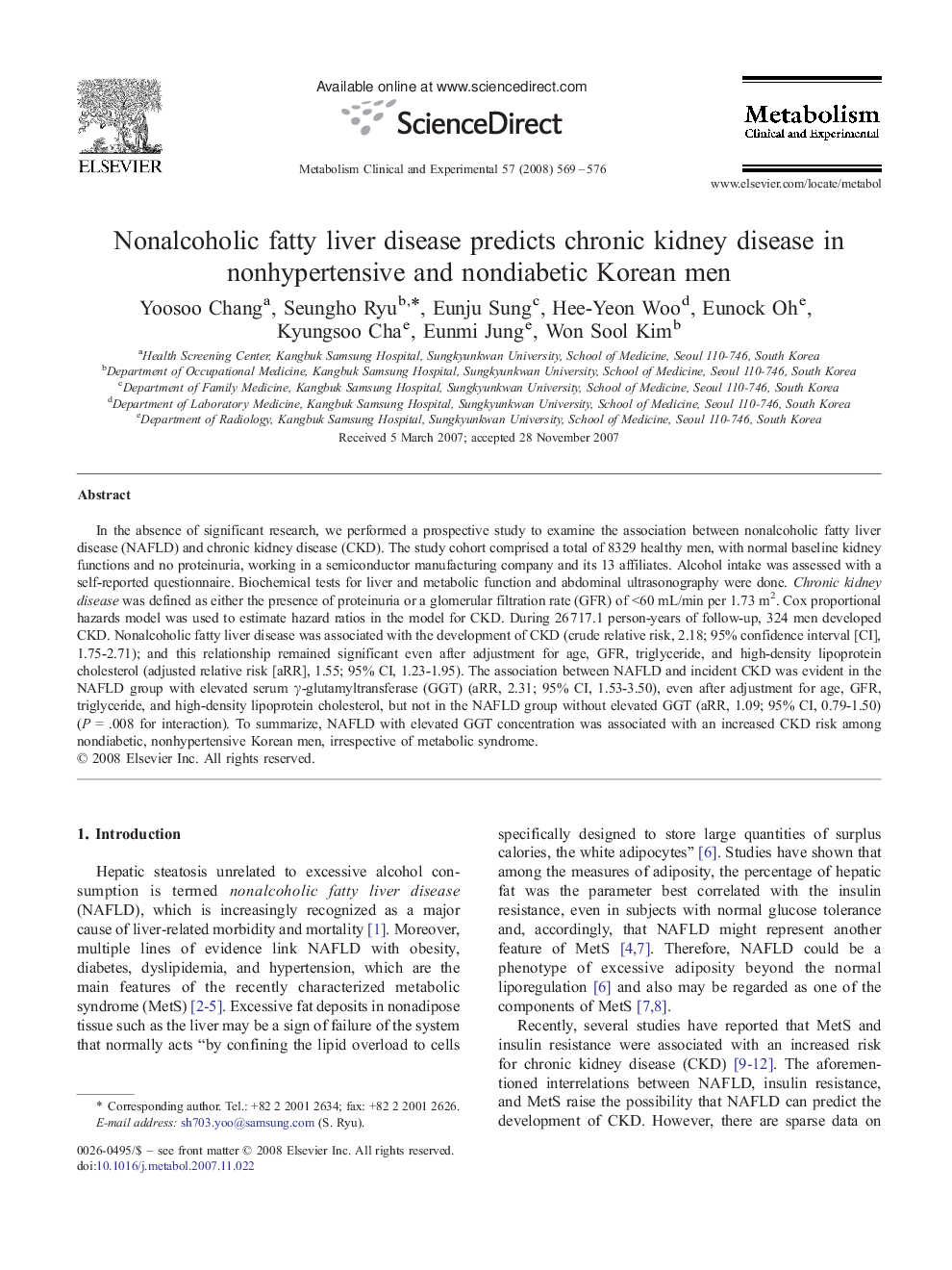| Article ID | Journal | Published Year | Pages | File Type |
|---|---|---|---|---|
| 2807435 | Metabolism | 2008 | 8 Pages |
In the absence of significant research, we performed a prospective study to examine the association between nonalcoholic fatty liver disease (NAFLD) and chronic kidney disease (CKD). The study cohort comprised a total of 8329 healthy men, with normal baseline kidney functions and no proteinuria, working in a semiconductor manufacturing company and its 13 affiliates. Alcohol intake was assessed with a self-reported questionnaire. Biochemical tests for liver and metabolic function and abdominal ultrasonography were done. Chronic kidney disease was defined as either the presence of proteinuria or a glomerular filtration rate (GFR) of <60 mL/min per 1.73 m2. Cox proportional hazards model was used to estimate hazard ratios in the model for CKD. During 26 717.1 person-years of follow-up, 324 men developed CKD. Nonalcoholic fatty liver disease was associated with the development of CKD (crude relative risk, 2.18; 95% confidence interval [CI], 1.75-2.71); and this relationship remained significant even after adjustment for age, GFR, triglyceride, and high-density lipoprotein cholesterol (adjusted relative risk [aRR], 1.55; 95% CI, 1.23-1.95). The association between NAFLD and incident CKD was evident in the NAFLD group with elevated serum γ-glutamyltransferase (GGT) (aRR, 2.31; 95% CI, 1.53-3.50), even after adjustment for age, GFR, triglyceride, and high-density lipoprotein cholesterol, but not in the NAFLD group without elevated GGT (aRR, 1.09; 95% CI, 0.79-1.50) (P = .008 for interaction). To summarize, NAFLD with elevated GGT concentration was associated with an increased CKD risk among nondiabetic, nonhypertensive Korean men, irrespective of metabolic syndrome.
